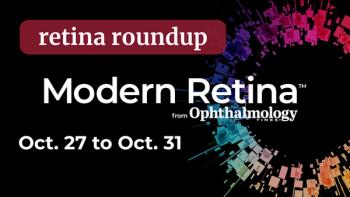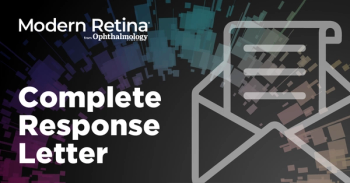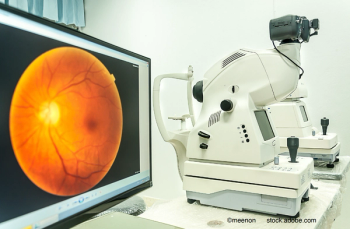
ASRS 2024: Safety and durability of voretigene neparvovec-rzyl for biallelic RPE65
Stephen Russell, MD, discussed his presentation on safety and durability of voretigene neparvovec-rzyl for biallelic RPE65 at the annual ASRS meeting in Stockholm, Sweden.
Stephen Russell, MD, discussed his presentation on safety and durability of voretigene neparvovec-rzyl for biallelic RPE65 at the annual ASRS meeting in Stockholm, Sweden.
Video Transcript:
Editor's note: The below transcript has been lightly edited for clarity.
Stephen Russell, MD:
Hi, I'm Steve Russell from the University of Iowa. I am one of the principal investigators on the phase 3 trial of voretigene neparvovec-rzyl, otherwise known as Luxturna. I'm here at the ASRS presenting the 8 and 9 year follow-up results of the trial, which are quite interesting. Unfortunately, we lost quite a few patients to follow-up during COVID. In the data that we presented, we realigned the data a bit. Let me explain about that. So the trial, as you may recall, involved randomizing the patients 2 to 1 to immediate treatment versus delayed intervention, which was allowed 1 year after the primary endpoint was determined.
The primary endpoint was met all of the patients who participated in the trial that were in the control group, the delayed intervention group, then we're allowed to get the voretigene neparvovec-rzyl. So to look at how patients are responding over a longer period of time, as we begin to lose patients from the trial because of COVID and other drop out, we realigned to the intervention points of the delayed intervention with the original intervention group, so that we would have the same duration from the intervention to look at how they were doing following intervention.
As you recall, the original intervention group did quite well improved approximately 2 light levels on the mobility test, the multi-luminance mobility test, FST, visual field ,and so on. The delayed intervention group did similarly, and over the longer term in 8 to 9, and the reason it's 8 to 9 year follow up is because it's 8 year follow-up for the delayed intervention and 9 year follow up for the original intervention because they were in, they had been treated for an additional year at our follow-up time points.
The bottom line of the study is that for a majority of measurements, especially the mobility tests, the MLMT primary endpoint, there did not appear to be any drop off in terms of the effectiveness of the therapy at 9 and 10 years, there was a little bit more variability in the visual field out results, which suggested that there may be, there's some patients that are having some loss, or that there may be just a generalized loss, but we didn't look at that these were all averages of the outcomes. There were a couple of safety things that should be mentioned. The first is that we did find 3 cases of chorioretinal atrophy in phase 3 trial, which is significant, since we had not identified those previously. There was also 1 case of acute myelogenous leukemia in 1 patient who died at year 7. There was no evidence, however, that that was associated with the use of voretigene neparvovec-rzyl or gene therapy.
One of the reasons that we're following patients for so long on this particular trial is that this was the first approved gene therapy for any inherited disease, and because of that, the FDA stipulated that we had to have a 15 year follow-up, we have actually collected already the 10 year information, we just didn't have it available for this meeting. And that will be in the forthcoming publication. We hope to have out soon. But there's additional 5 more years of collection for safety reasons, I think that there are, you know, a whole bunch of exciting areas that are sort of in development and competitively vying for the next breakthrough, inherited retinal diseases, there have been a number of non-gene therapy kinds of approaches using things like RNA oligonucleotide therapy, which is, can be very effective in certain conditions, but has some other kinds of side effects. We don't have time to talk about all of those. There is hope that the more generalized gene therapy of CRISPR Cas-9 might be able to be applied to inherited retinal diseases. It was an attempt to do it on a gene CEP290, which unfortunately didn't reach his primary endpoint. There's reason to think that there may be a way of increasing something called the the cut rate, which is the ability of the CRISPR Cas-9 to be able to cut the DNA in the appropriate location using a primer, which is called prime editing. That looks very exciting. So there are some newer technologies out there, it may be a combination of things.
There are also a lot of interesting technologies now looking at potentially a broader approach to inherited retinal disease where you may be able to treat more generally with a stabilizing agent, I guess for lack of a better term, for cones, and so there may be some alternative therapies that may be really exciting coming up.
Newsletter
Keep your retina practice on the forefront—subscribe for expert analysis and emerging trends in retinal disease management.















































